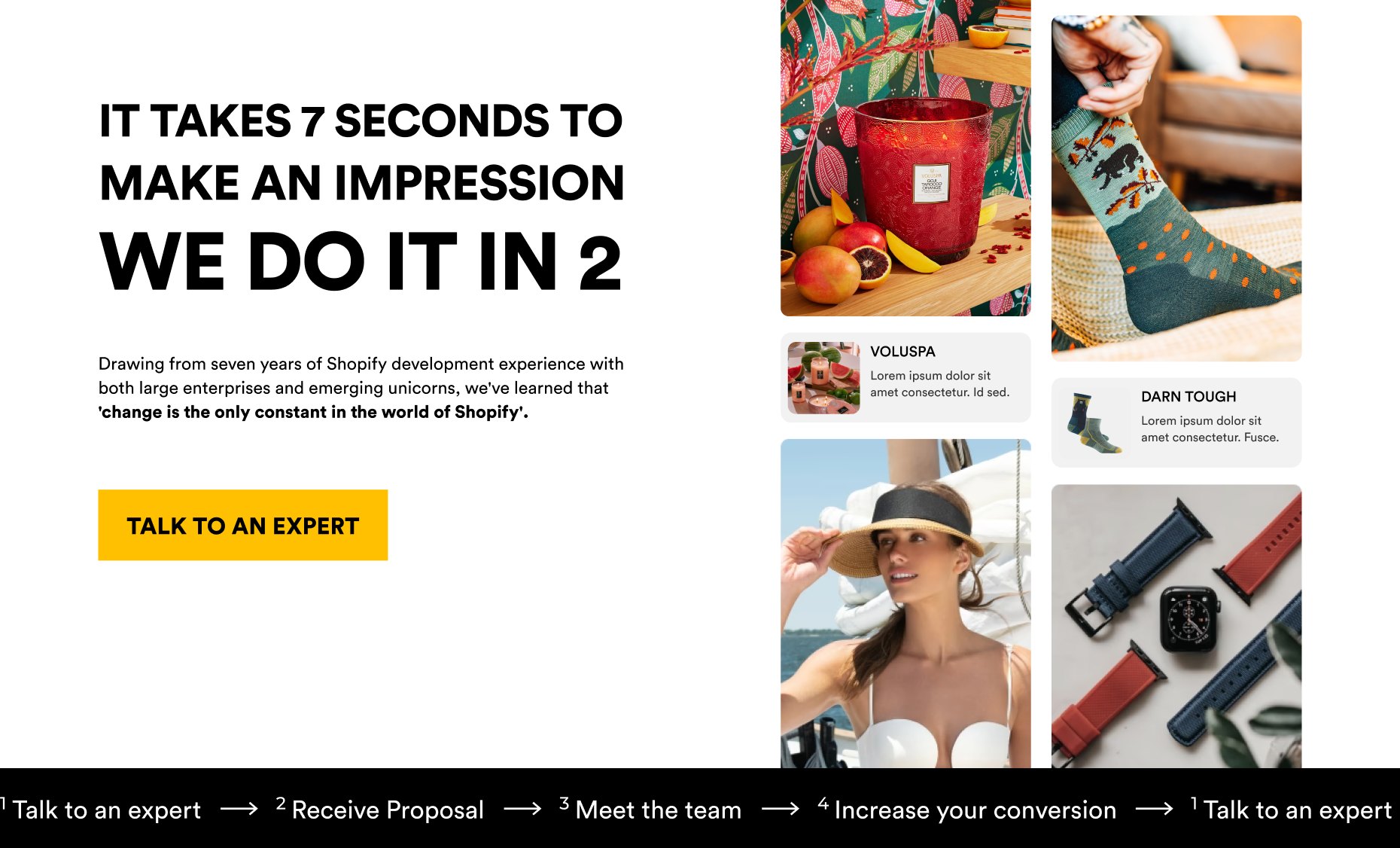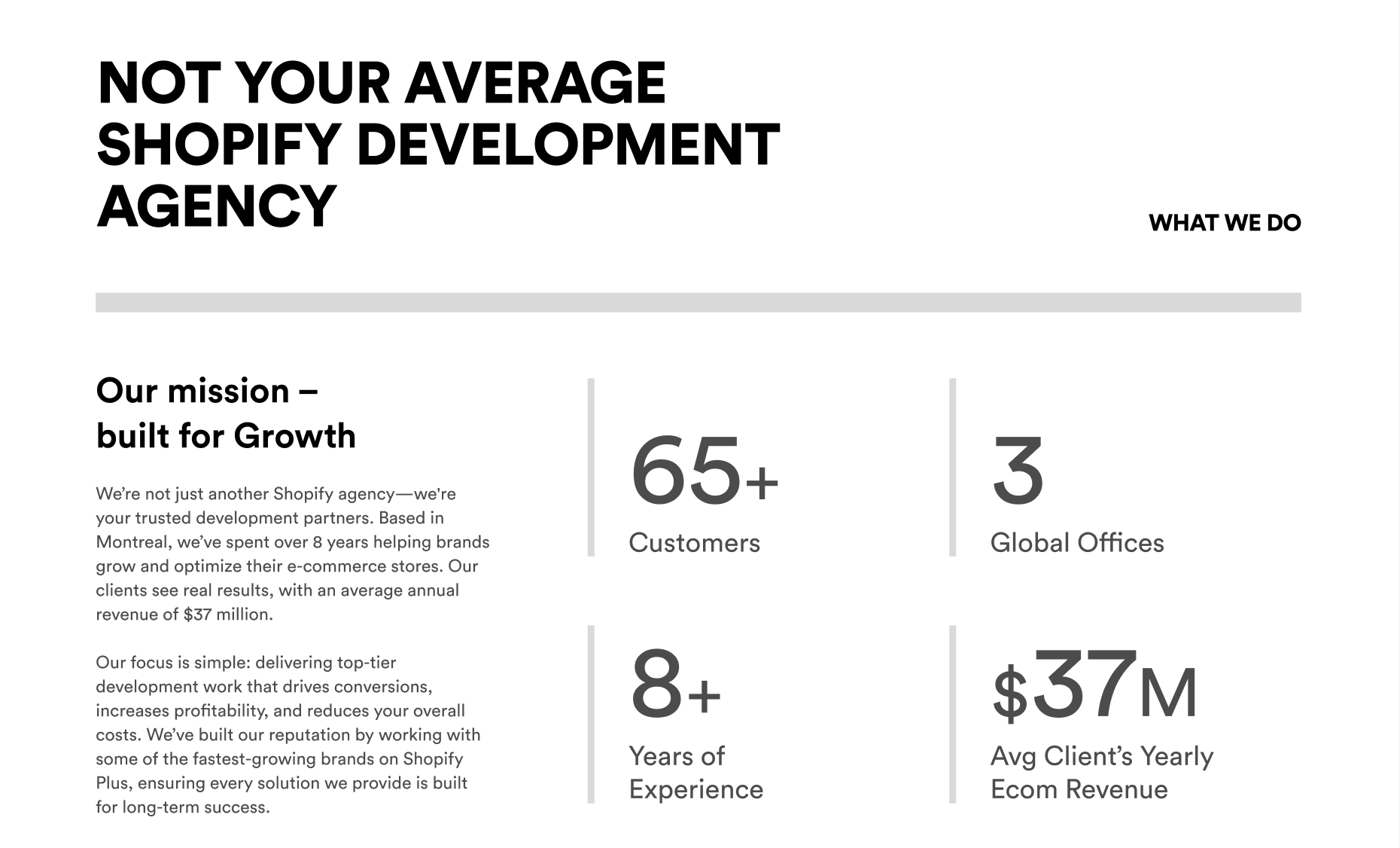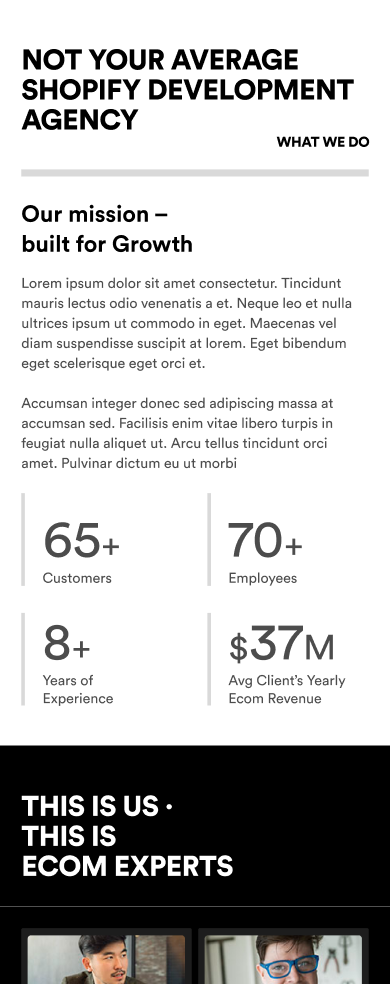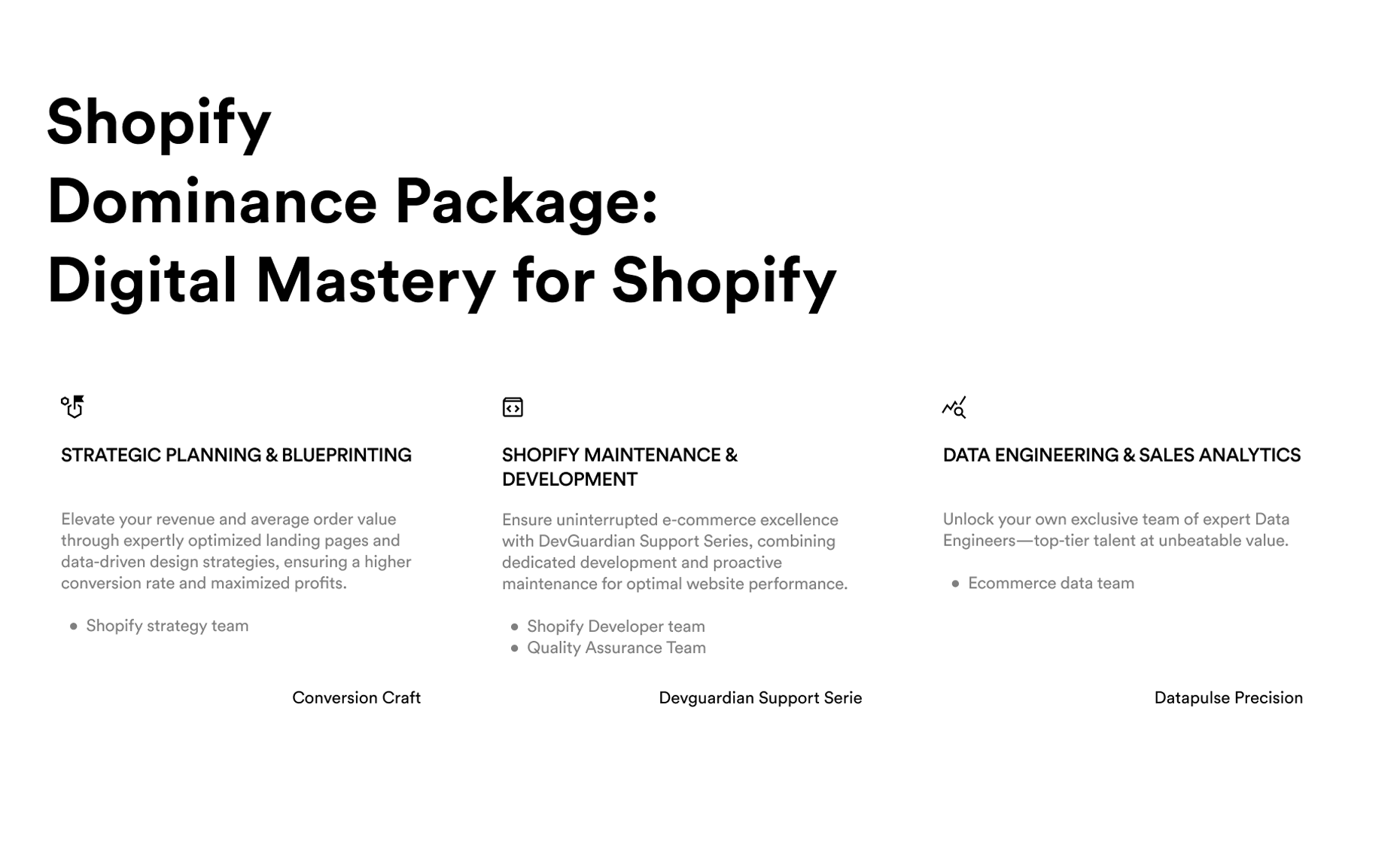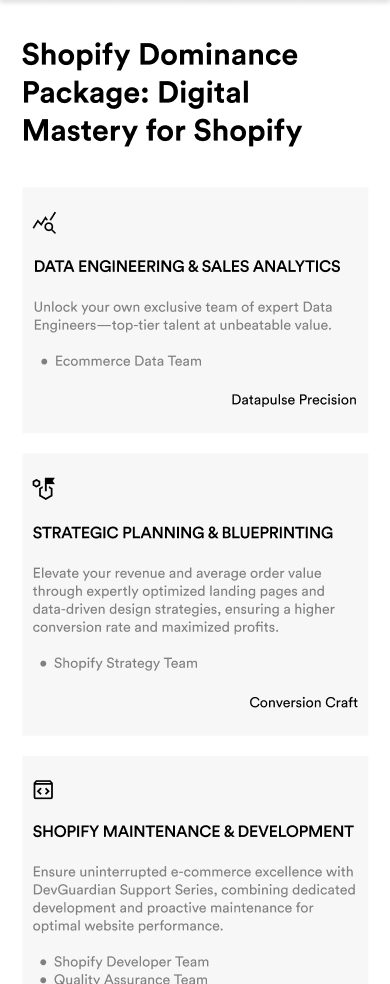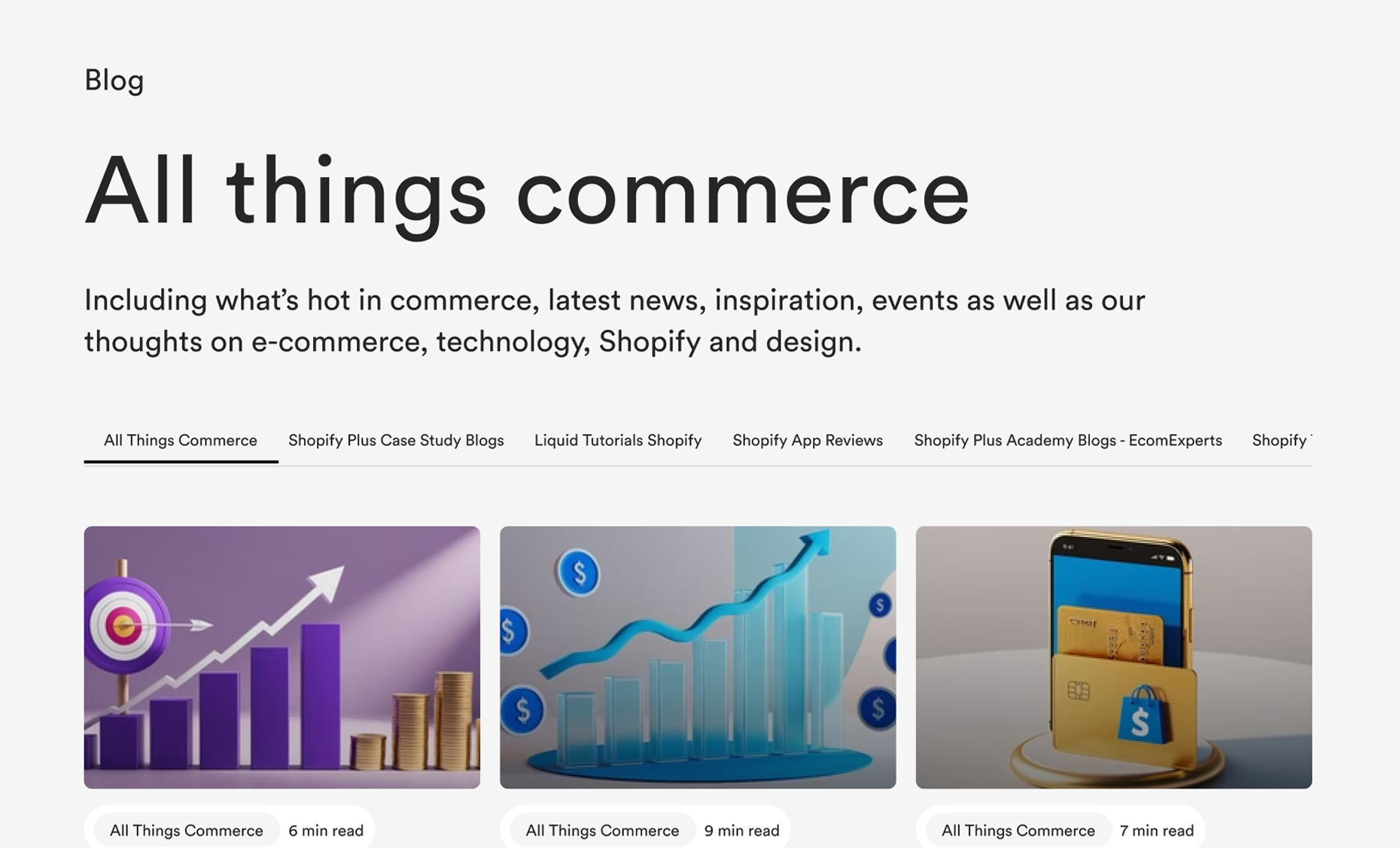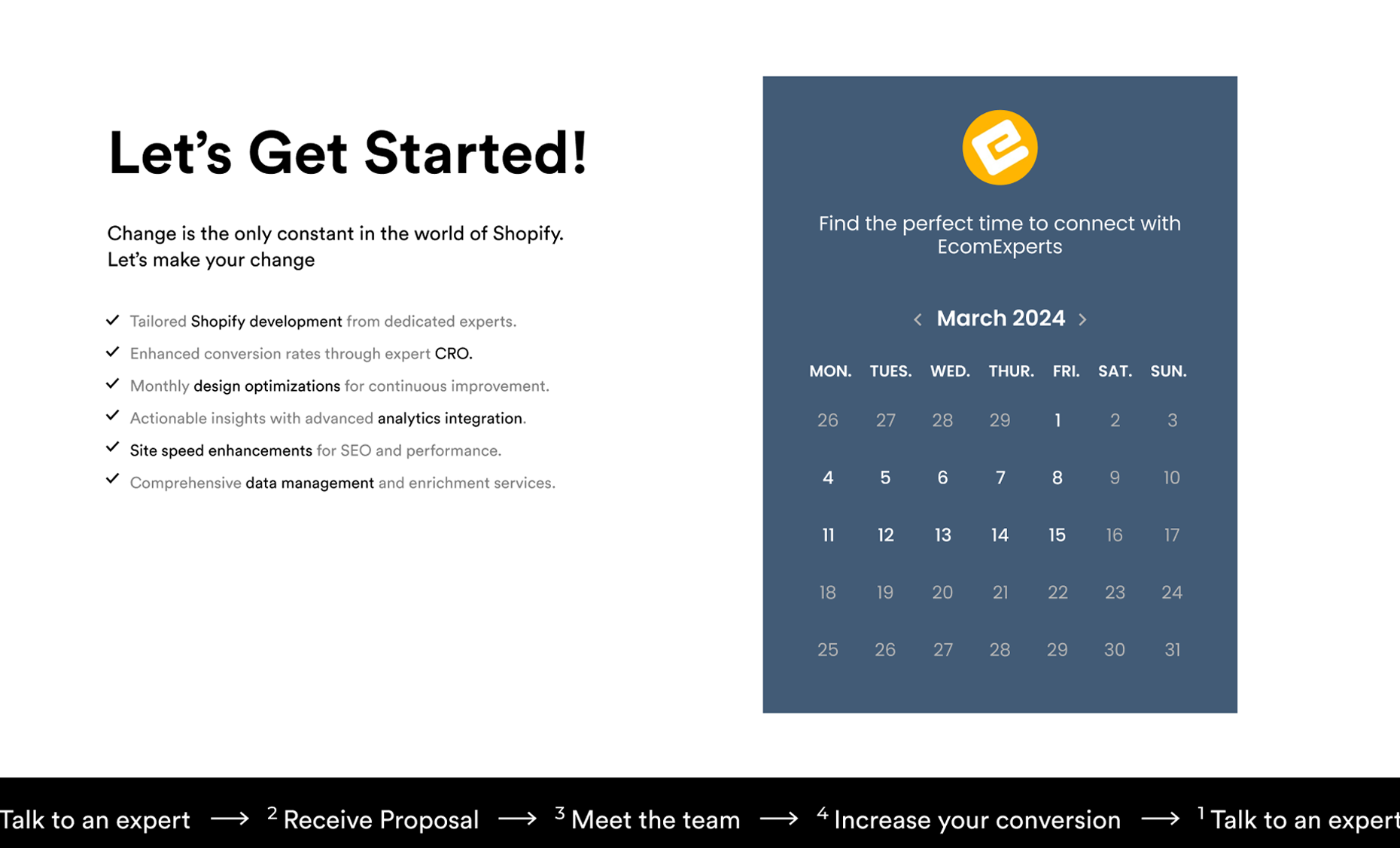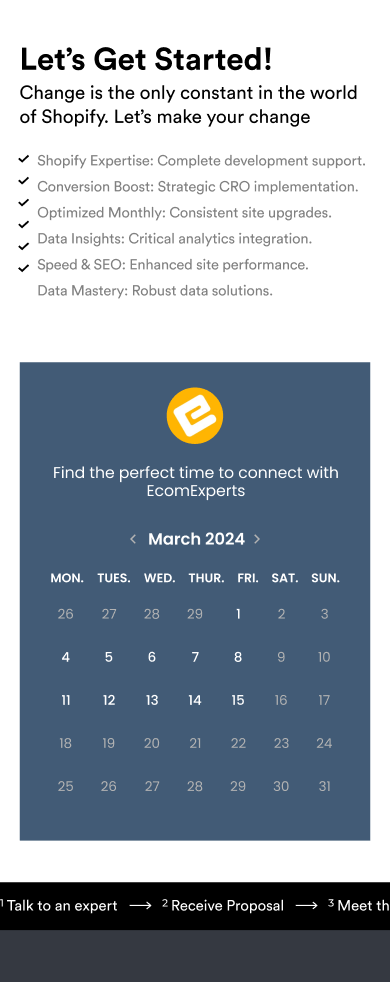When was the last time you bought something without doing a little research first? Whether it's checking reviews, watching a video, or just googling the product, we all go through a bit of a process before hitting that “Buy Now” button.
That process? It’s what marketers call the buyer’s journey.
Now, if you’re in e-commerce—or any kind of business, really—understanding this journey is everything.
Why?
Because it’s not just about getting people to your website; it’s about knowing exactly what stage they’re in and what they need from you in that moment.
Do they even know they have a problem? Are they just weighing options? Or are they ready to pull out their credit card?
What is the Buyer’s Journey?

The buyer’s journey is basically the path people follow when making a purchase, whether they’re buying a new gadget, signing up for a service, or filling their online shopping cart.
Think about the last time you bought something online—chances are, you didn’t just stumble upon it and click “buy.” You probably started with some research, compared your options, and maybe even asked a friend or read reviews before making your decision.
That’s the buyer’s journey in action.
It’s not about being pushy or forcing a sale. It’s about meeting your potential customers where they are. Every step in their journey gives you a chance to help them find what they’re looking for—and if you play your cards right, they’ll trust you enough to buy from you.
Why Should You Care About the Buyer’s Journey?
Here’s the deal: People don’t just wake up and decide to buy something—they go through phases. And if you understand these phases, you can speak their language at every step.
According to a recent study, businesses that actively engage their customers during these stages can increase sales by up to 20%. That’s huge. It’s about creating connections that feel real and personal, not just throwing ads at people and hoping something sticks.
For e-commerce brands, this means crafting content, emails, product descriptions, and even ads that align with what the customer needs in that exact moment. When you can do that, you’re not just another store—you’re the brand they trust.
The 5 Stages of the Buyer’s Journey

Let’s dig deeper into the buyer’s journey, but this time we’ll break it down into five stages.
This model is gaining more traction in 2024, especially in e-commerce, because it gives businesses a fuller picture of how buyers move through each phase before making a purchase.
Stage 1: Awareness
The journey starts when your potential customer realizes they have a problem or a need. At this point, they might not know exactly what that problem is, or they might be unaware that a solution even exists.
This is where educational content comes in handy. Your job is to help them put a name to their problem, so they can move forward in their journey.
For example, a person might notice that their website isn’t converting visitors into customers but doesn’t yet realize that poor page speed is the problem.
According to Gartner, over 80% of consumers begin their journey with online research, often looking for educational content to clarify their needs.
Stage 2: Consideration
Once the customer knows they have a problem, they begin actively searching for solutions. This is the consideration stage, where potential buyers are comparing different options that can solve their issue.
Your content here should focus on providing detailed information about how your product or service solves their specific problem.
Research found that 68% of buyers spend time comparing different solutions during this stage, looking at features, pricing, and reviews.
Creating comparison guides, case studies, or product demonstrations will help you stand out here.
Stage 3: Evaluation
This is a critical point in the buyer’s journey. During the evaluation stage, potential customers are narrowing down their options and deciding which product or service fits their needs best.
They’re not just looking for general solutions anymore—they’re actively evaluating your offering against others.
In fact, a study highlights that customers are willing to pay more for brands that offer a superior customer experience, with 73% citing experience as a major influence in their purchasing decision.
Your content should focus on providing transparent pricing details, customer testimonials, and in-depth product comparisons.
Stage 4: Purchase
At this stage, the customer has made their decision and is ready to buy. This is where your product page, checkout process, and overall customer experience play a huge role.
The key here is to ensure that the purchase process is seamless, easy, and trustworthy.
Statista’s report found that simplifying the checkout process can increase conversion rates by 35% in e-commerce, especially when options like one-click checkout and guest checkout are available.
Clear calls-to-action and limited distractions on your product pages will help guide your customer to complete their purchase.
Stage 5: Post-Purchase
The journey doesn’t end with the purchase. In the post-purchase stage, your focus should shift to making sure the customer is happy with their purchase and building loyalty so they return in the future.
This is where follow-up emails, feedback requests, and personalized offers come into play.
According to a report by Bain & Company, increasing customer retention by just 5% can lead to a profit increase of 25% to 95%.
You want to turn first-time buyers into loyal customers who not only come back for more but also recommend your brand to others.
Why Understanding the Buyer’s Journey is Key for E-Commerce Success

So, why should you care about mapping out the buyer’s journey? Simple—it’s about understanding your customer’s mindset at every step and knowing what they need at each point.
The more in tune you are with their journey, the better you can guide them to the finish line (aka a sale).
Meeting Customers Where They Are
When you know where your customers are in the buyer’s journey, you can tailor your message to speak directly to their needs. At the awareness stage, they’re probably just looking for information.
At the evaluation stage, they need solid proof that your product or service is the right fit. It’s all about sending the right message at the right time.
For example, Adobe’s Consumer Insights Report shows that 75% of consumers expect brands to understand their needs, and when they do, it leads to 23% higher engagement
That’s huge for e-commerce brands, especially when you’re competing in a crowded market.
Personalization Equals Conversion
Personalized content isn’t just a nice-to-have anymore; it’s a must. In fact, reports highlight that companies using personalization effectively can increase revenue by 10-15%.
When your content resonates with customers because it’s aligned with where they are in their journey, they’re far more likely to trust you and convert.
Think of it this way—if you’re pushing for a sale when someone is still in the awareness stage, it’s like trying to sell a car to someone who doesn’t even have a driver’s license yet.
Instead, offer educational content that solves a problem for them. By the time they hit the decision stage, they’ll know and trust you as an expert.
Building Trust Along the Way
Trust is a big deal in e-commerce. Around 81% of consumers say they need to trust a brand before they decide to buy from them.
The buyer’s journey gives you the perfect roadmap to build that trust. Instead of bombarding customers with aggressive sales tactics, you guide them through their process at their own pace, answering their questions and easing their concerns.
The end result? Happy customers who feel like they’ve made a well-informed decision—and that kind of customer is more likely to come back for repeat business or recommend you to others.
How to Map Out the Buyer’s Journey for Your E-Commerce Business

Mapping out the buyer’s journey is like creating a roadmap for your customers. It’s about figuring out where they start, what paths they take, and what leads them to buy from you—or what stops them.
By clearly identifying each stage, you can tailor your strategy and provide the right touchpoints to guide them through.
Step 1: Identify Customer Touchpoints
The first step is figuring out all the ways your customers interact with your business. These touchpoints could be anywhere—on your website, social media, email campaigns, or even paid ads.
For example, a potential customer might first hear about your product from an Instagram ad (awareness stage), then visit your website and read a blog (consideration stage), and finally sign up for your email list to get more information (evaluation stage).
Knowing these interactions allows you to optimize each one.
Step 2: Analyze Customer Behavior at Each Stage
Look at how your customers behave during each stage of the journey. Tools like Google Analytics or Hotjar can give you insights into which pages people visit, how long they stay, and where they drop off.
According to Statista, websites that use behavior analysis to improve customer flow see a 30% boost in conversions.
For example, if you notice that a lot of people are visiting your product pages but not adding anything to their cart, you might need to rework your product descriptions or add testimonials to build trust.
Step 3: Create Content for Every Stage
Once you know where your customers are engaging with you, it’s time to create content that speaks to each stage of the buyer’s journey. For awareness, this could be educational blog posts or explainer videos.
For consideration, it might be comparison guides or case studies. And for the decision stage, you’ll want clear, persuasive product pages with pricing details and reviews.
Step 4: Continuously Refine and Optimize
The buyer’s journey isn’t set in stone. Customer behavior changes, and so should your strategy. Regularly review your analytics and gather feedback to refine your approach.
The more you learn about how your customers move through each stage, the better you can tweak your touchpoints and content to make the journey smoother and more enjoyable for them.
Practical Tips for Optimizing the Buyer’s Journey
Optimizing the buyer’s journey is all about creating an experience that’s smooth, personal, and makes your customers feel understood.
Let’s dive into some practical ways you can refine each stage of the journey to get your audience moving towards that final purchase—and keep them coming back for more.
1. Personalize Every Step
People crave a personal touch. Whether it’s receiving tailored product recommendations or a simple personalized email, those small, thoughtful touches can make a big impact.
The key is to deliver relevant content at the right time. For example, in the awareness stage, focus on educating your audience about their problem.
Once they’re in the decision stage, it’s time to get specific—show them why your product is the best solution for their needs.
This doesn’t mean over-complicating things. Start by segmenting your audience based on their behaviors and preferences, and then craft messaging that speaks to those groups. It's about connecting with people in a way that feels personal, not generic.
2. Make the Checkout Process Frictionless
The moment someone decides to make a purchase, they shouldn’t hit any roadblocks. A simple, smooth checkout process can make all the difference.
Think about removing unnecessary steps, offering guest checkout options, and providing a variety of payment methods. The easier it is, the more likely they’ll complete the transaction.
Ask yourself: What can you simplify? Are there any extra clicks, forms, or distractions that could be cut? Reducing the friction in this final step can be the game-changer that boosts your conversion rates.
3. Showcase Reviews and Testimonials
People trust other people. Highlighting reviews and testimonials from happy customers can nudge a hesitant buyer toward making that final decision.
Showcasing customer experiences, especially when they relate to the exact problem your potential buyer is trying to solve, builds credibility.
Make it easy for customers to see these reviews right on your product pages, and don’t be afraid to integrate testimonials into your marketing materials. Real, relatable stories from other customers can be more persuasive than any sales pitch.
4. Bring Back Lost Customers with Retargeting
Not every visitor will convert the first time they interact with your brand, and that’s okay. Retargeting gives you a second (or third) chance. By serving ads or emails that remind customers about the product they were eyeing, you stay top of mind.
But keep it light—don’t bombard them with repetitive ads. Instead, remind them of the value of your product and why it’s a great solution for their problem.
If they’ve abandoned their cart, maybe offer a discount or free shipping as a gentle nudge.
5. Keep the Relationship Going Post-Purchase
Just because someone made a purchase doesn’t mean the journey ends. Post-purchase engagement is where long-term customer loyalty is built.
Sending a follow-up email, offering tips for using the product, or suggesting complementary items are all ways to keep the conversation going.
The post-purchase stage is also a great time to introduce loyalty programs or offer incentives for their next buy. It’s all about making your customers feel valued so they’ll come back again.
Common Mistakes to Avoid in the Buyer’s Journey
Understanding the buyer’s journey is powerful, but even with the best intentions, many businesses make mistakes that can prevent customers from moving smoothly through each stage. Let’s look at some common pitfalls and how to avoid them.
1. Ignoring the Awareness Stage
One big mistake is jumping straight into the hard sell before your customer even knows they have a problem.
At the awareness stage, people are just beginning to realize they have an issue, and they need information, not a pitch. If you bombard them with sales offers too early, you risk losing their interest.
The fix? Focus on creating educational content that helps your audience define their problem. Blogs, videos, and infographics that offer genuine value will build trust and set the foundation for a relationship before you ever mention your product.
2. Failing to Provide Value at Every Stage
Some businesses offer a lot of value upfront but lose steam as the customer moves through the journey. Every stage—awareness, consideration, evaluation, and even post-purchase—should provide value.
Whether it’s through helpful guides, comparison tools, or personalized follow-up, each touchpoint should make the customer feel supported and informed.
Think of it like this: if your content is only useful at the start, customers may leave before they’re ready to make a purchase. Consistently offering relevant information at each stage keeps them engaged and moving forward.
3. Treating All Customers the Same
Another common mistake is adopting a one-size-fits-all approach. Every customer is at a different stage of their journey, and they need different things depending on where they are.
Someone in the awareness stage doesn’t need a product demo yet, while someone in the decision stage doesn’t want to be flooded with beginner-level information.
To avoid this, segment your audience based on their behaviors and preferences, and serve them content that aligns with their current needs. Personalization is key to making each customer feel like you understand exactly what they’re looking for.
4. Overcomplicating the Journey
We’ve all seen websites that are a maze to navigate or checkout processes that take way too many steps. One major mistake is making the customer’s journey too complicated.
Whether it's too many clicks to get to a product, an overload of information, or a confusing checkout process, unnecessary complexity drives customers away.
Simplify everything. Make your website easy to navigate, provide clear calls-to-action, and streamline the checkout process. The smoother and faster the journey, the more likely customers are to stick with you.
5. Forgetting the Post-Purchase Stage
A lot of businesses assume that the journey ends when the customer makes a purchase, but that’s a missed opportunity.
The post-purchase stage is where loyalty is built, and turning first-time buyers into repeat customers is where long-term success lies.
Don’t just disappear after a sale. Follow up with thank-you emails, product care tips, or suggestions for related products. This is the perfect time to introduce loyalty programs or request feedback.
By staying connected, you turn one-time buyers into loyal advocates for your brand.
Avoiding these common mistakes can help ensure that the buyer’s journey is as seamless and enjoyable as possible, leading to more conversions, better customer relationships, and long-term growth.
When you focus on the customer’s needs at each stage and make their experience easy and valuable, you set your business up for success.
Final Thoughts on Understanding the Buyer’s Journey
By now, you should have a clear picture of what the buyer’s journey is and how you can use it to guide potential customers from awareness all the way to post-purchase.
It’s not about reinventing the wheel but about understanding your audience and providing them with the right information, tools, and support at each step.
Here are some final takeaways to keep in mind:
- Tailor Your Content to the Journey: Always remember that people are at different stages, and the content you provide should match their needs. Don’t try to sell too early, and don’t wait too long to offer value.
- Keep It Simple: Whether it’s the checkout process or the path to finding information, simplicity wins. Make the journey easy for your customers, and they’ll be more likely to stay on course.
- Focus on Personalization: A personalized experience doesn’t just make customers feel understood—it also boosts your chances of conversion. Use the data and insights you have to make your customer’s experience feel unique.
- The Journey Doesn’t End with the Sale: The post-purchase phase is just as crucial as the first stages. Keep the conversation going and turn your customers into repeat buyers and brand advocates.
Mastering the buyer’s journey is about building trust, offering value, and removing any barriers that stand between your customer and their purchase decision.
When done right, it doesn’t just lead to a sale—it leads to lasting relationships and loyal customers who return time and time again.
By optimizing every stage of the journey, you’re not just improving your customer experience—you’re building the foundation for long-term business success.
FAQs: Understanding the Buyer’s Journey
1. What is the buyer’s journey?
The buyer’s journey refers to the process a potential customer goes through from realizing they have a problem (awareness), to exploring solutions (consideration), and finally making a purchase (decision). Each stage presents an opportunity for businesses to provide relevant information and support to guide the buyer toward a purchase.
2. Why is the buyer’s journey important for e-commerce businesses?
Understanding the buyer’s journey allows e-commerce businesses to tailor their messaging, content, and offers to meet customers’ needs at each stage. This leads to more meaningful engagements, higher conversions, and improved customer retention.
3. How can I optimize the buyer’s journey for my online store?
To optimize the buyer’s journey, focus on creating personalized content for each stage, simplify your website’s navigation and checkout process, and use customer data to refine your strategies. Offering valuable content, clear product information, and customer reviews can help move potential buyers from awareness to decision.
4. What’s the difference between a buyer’s journey and a customer journey?
The buyer’s journey focuses on the steps a potential customer takes before making a purchase, while the customer journey includes all interactions a customer has with a business—before, during, and after the purchase, including post-purchase follow-up and customer service experiences.
5. How do buyer personas fit into the buyer’s journey?
Buyer personas are fictional representations of your ideal customers. They help businesses understand customer motivations, challenges, and needs at each stage of the buyer’s journey. Creating accurate buyer personas allows you to craft more targeted and effective marketing strategies for each stage of the journey.


